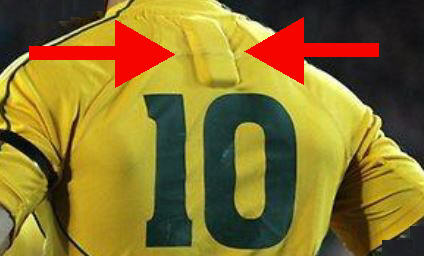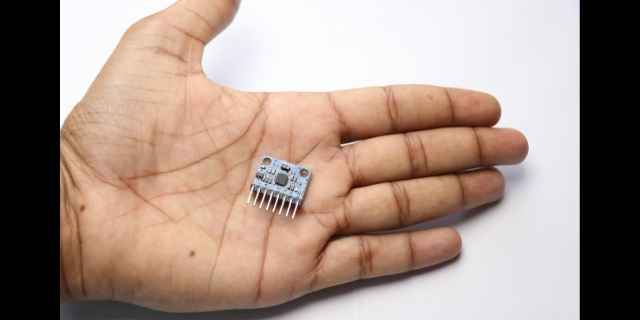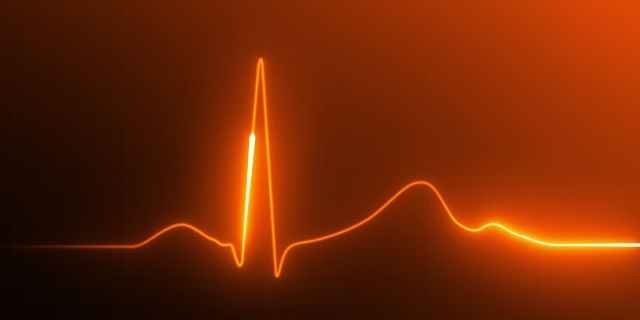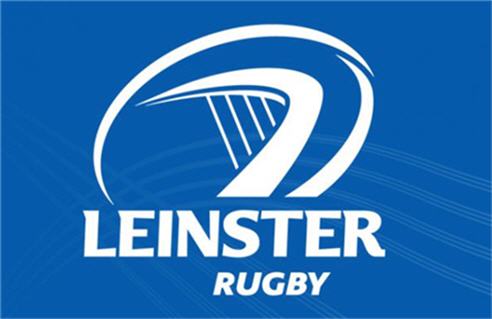You’ve probably noticed that many professional rugby players have a lump on the back of their shirts between their shoulder blades.
This is often called a GPS tracker, but these devices measure a lot more than the position on the pitch.
This article takes an in-depth look at trackers in rugby.
What is the Lump on the Back of Rugby Shirts?
The lump on the back of rugby shirts is the visible part of a sophisticated biometric tracking system used by coaches to track a variety of statistics about every player.
The padded casing surrounds a unit that is commonly referred to as a GPS tracker, although it contains other measuring devices.
The device generally includes a transmitter, a GPS tracker, an accelerometer, a gyroscope, and a magnetometer.
It’s also commonly connected to a heart rate monitor, although that may be in a separate device in a chest band.

The unit collects data and transmits it to computers kept by the coaches and trainers, generally using a wifi signal. The data can then be viewed in real-time or downloaded for later analysis.
That slight bulge that you see is the unit and its protective case. The visible part is the packaging designed to protect both the electronics and the player from damage due to the usual impacts in rugby.
There are two ways that players wear the tracking unit. The picture above shows it carried in a specially made pocket on the back of the shirt. The unit slips in and out of the pocket.
The alternative is to carry the unit in a harness worn under the shirt.
How Do Rugby Trackers Work?
The several components of the tracking system work together to collect various data and transmit it to coaches and trainers. Let’s look at each component in turn.
GPS

Somewhat confusingly, it is fairly common for the entire tracking system to be referred to as a GPS, even though there’s so much more to it.
However, It does contain a GPS device. This works just like the GPS in your phone or car. It’s used to keep track of:
- how much ground the player covers during a match
- the different speeds of the player at different times
- the lines that each player takes as the play unfolds
It’s possible to use other satellite mapping systems instead of GPS. But GPS is inexpensive, accurate, and by far the most common.
Local networks can also be created as an alternative to GPS for use in indoor arenas or other areas where GPS does not reach well.
Accelerometer

The accelerometer helps to keep track of collisions. It gives a reading as to sudden changes in force caused by direct contact, acceleration, and deceleration.
This can be taking or receiving a tackle. It can also measure the force when a player joins a ruck.
The coaches and trainers can use this data to understand the amount of physical punishment a player is taking.
Gyroscope and Magnetometer
The gyroscope uses gravity to give orientation to the data provided by the accelerometer.
This gives additional depth to the acceleration changes by providing information as to the directional change and rotation caused during collisions.
Similarly, the magnetometer gives orientation to accelerometer data, but by using the magnetic field of the earth instead of gravity.
Without these two devices, the accelerometer would just give very raw information about changes in force and speed.
The gyroscope and magnetometer give much more nuance to the data regarding tackles and other collisions during a match.
Heart Rate Monitor

The heart rate monitor provides information about the player’s work intensity and fatigue levels.
Heart rate and heart rate recovery is the single best way to tell
- how tired a player is
- whether they can keep playing or need to rest
- whether they have recovered from a previous day’s workouts.
If a player’s heart rate is unusually accelerated during a match, they may need to be substituted so as not to hurt the general performance of the team.
This monitor is also useful during training. Let’s say that a player’s heart rate hasn’t returned to baseline after a break in one of the early sessions. They may need to back off a little on training for that day.
More technical details
If you’re interested in geeking out on the technical details, this research paper has more about the different technologies.
What Are Rugby Trackers Used For?
One of the primary uses for tracking systems is to manage a player’s workload to make sure that they stay healthy and able to perform at their peak for the entire season.
Every player will have a baseline set up throughout the season for collisions, heart rate, meters run per day, etc.
If they suddenly start to exceed this baseline, particularly if their heart rate does not appear to be recovering, it may be time to rest that player and potentially spare them an injury.
Match substitutions
During a match, the data for the tracker can be used to make decisions about substitutions.
Coaches watch out for players who:
- show erratic movement
- have an unusually elevated heart rate
- have taken an unusual amount of collisions
Any combination of these factors might be time to substitute that player out.
Practice sessions
The trackers can be used to monitor several things during practice. The most important is workload data which is used to avoid overtraining players.
Another important use is for squad members who haven’t been making the starting team. When a regular starter is injured, someone else has to step in and hit the ground running – so to speak.
During practice sessions, the coaches and trainers can use the tracker to bring a player’s workload up to what a starter has to deal with. This ensures the player is ready to handle the stress of more match time.
Running lines
The tracking can be used to show running lines for players throughout a match. When a team is on an attack, running lines are just as important for the fourteen players who don’t have the ball!
Let’s say that a planned attack keeps ending by the ball-carrier being tackled and getting turned over by the opposition.
This usually happens because there aren’t enough supporting team members protecting the ruck. Coaches can track the position and running line of each player at the start of the attack. They can then adjust the play in practice sessions.
Specific positions
Tracking is used to check on the progress of a player’s training for the specific requirements of their position.
For example, wingers may spend most of a match below jogging pace. But they should accelerate to top-end speed faster than other players. Trackers will monitor if they hit their straps consistently.
If a player’s top speed is lower from one season to the next, they may have put on too much muscle in the gym. The physios will adjust their weights sessions.
Who Introduced GPS Trackers To Rugby?
Rugby Union lagged behind several other team sports in introducing new technology. Australian Football Rules (AFL) brought in GPS to clubs in 2005.
At the same time, Michael Cheika was coaching Randwick RFC in Australia. That year, he was lured to Ireland as head coach at Leinster.

This is an account from Jamie Heaslip’s autobiography, the Leinster and Ireland number eight:
Leinster was the first rugby team in the Northern Hemisphere to use GPS tracking of the distance covered by each player in training and in games.
Cheika had seen it used in the Aussie Rules game and we started wearing the equipment in training.
Insights We’ve Learned From Trackers
GPS trackers have finally answered some burning questions discussed in pubs over beer forever. Check out these articles on:
- How fast can rugby players run (measured in the World Cup 2019)
- How far do rugby players run in a match (different positions compared)
Are Trackers Used In Other Sports?
Trackers are used in many other sports.
Most team sports strive to avoid overtraining and injury. Coaches seek to manage substitutions and maximize training efficiency. Other contact sports also want to keep track of collisions.
GPS trackers have been used in soccer, American football, and lacrosse, just to name a few.
Rugby Quiz!
Think you know your rugby?
Let's see if you can match the quote to the player or coach!
Here are seven quotes. How well will you do?
